














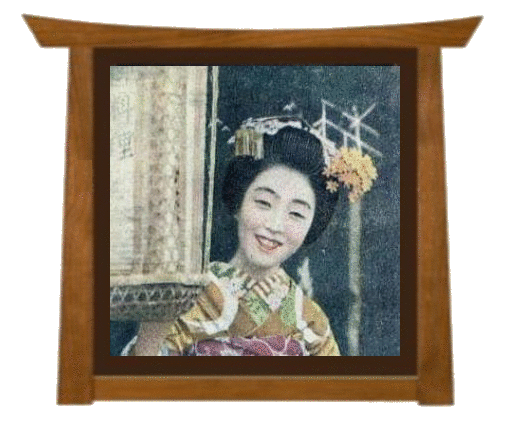

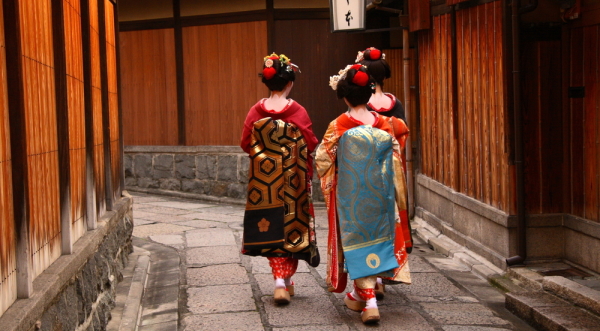

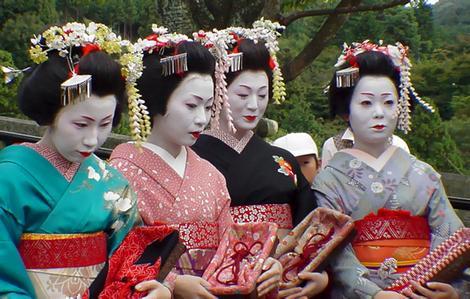
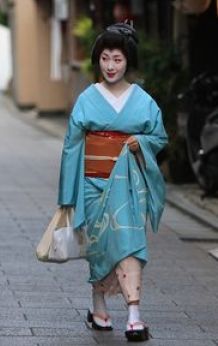
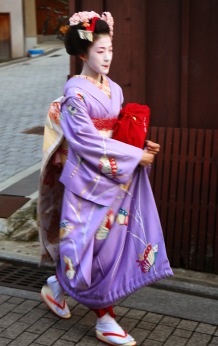
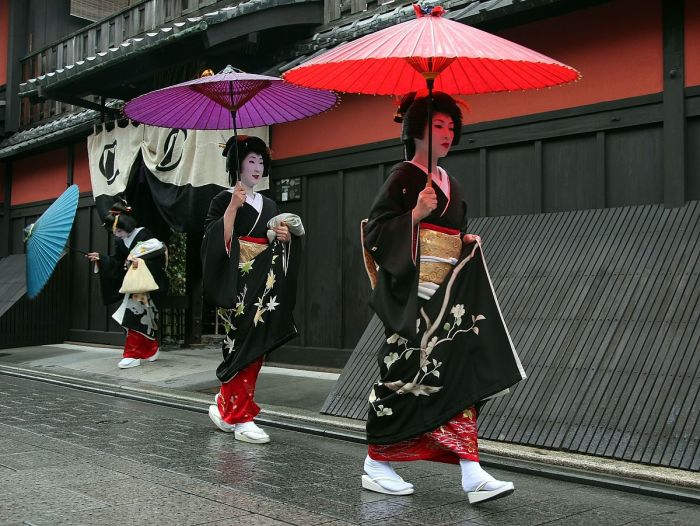
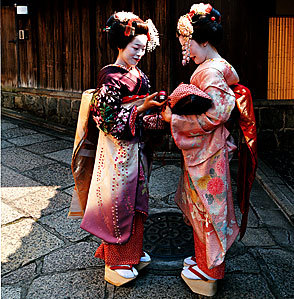
So it is with the geisha who, like the
swordsmith or kabuki actor or woodblock
artist or
even the sushi chef, must undergo
a long and trying apprenticeship before she
can officially attain the status of "geisha."
In early times, girls began this apprenticeship
while
still pre teens; however,today the age
for entering geisha training is fifteen.

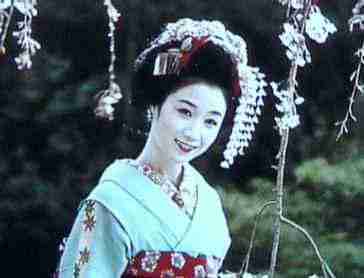


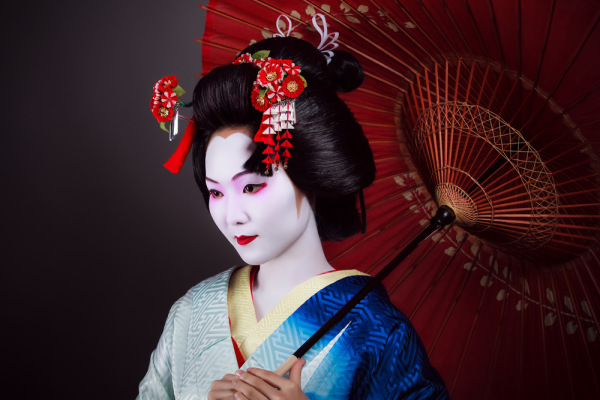
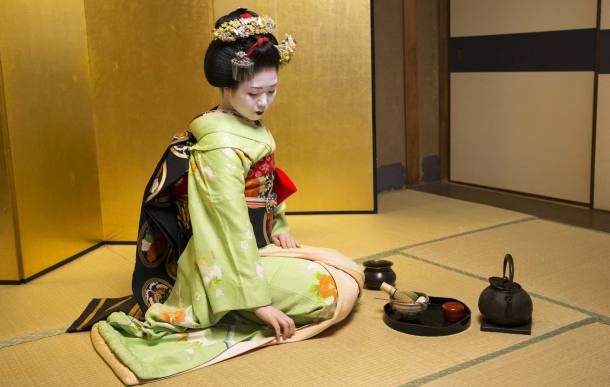
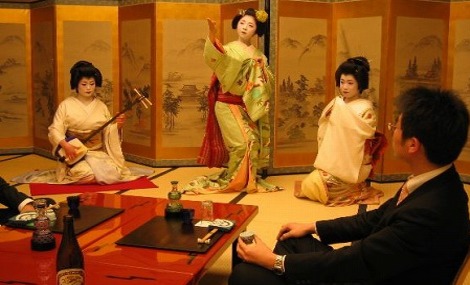
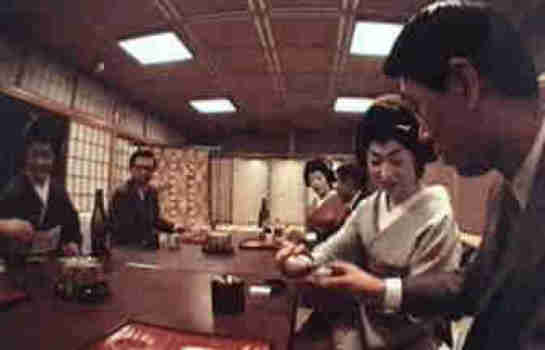
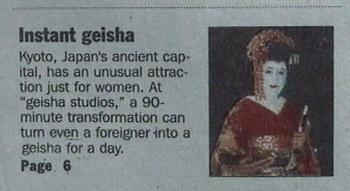



It may well be that geisha provide a comfortable
reminder for the human need
to remember the way things used to be. Women who pay a handsome sum to
stroll the streets
of Kyoto in the guise of geisha certainly
offer testimony to the
fascination and mystique that these women who "practice the arts" still
possess.
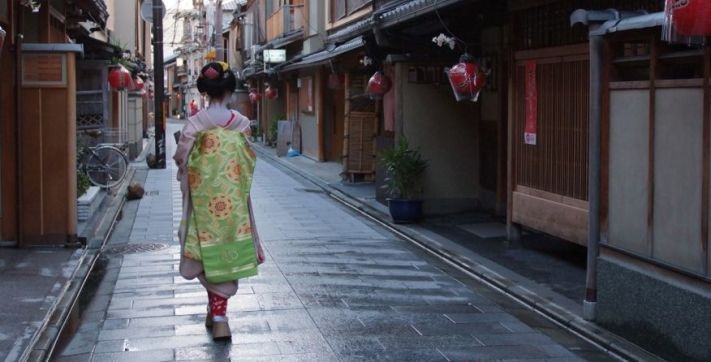
 ~NEXT~
~NEXT~

